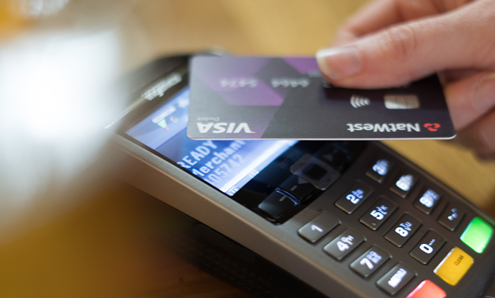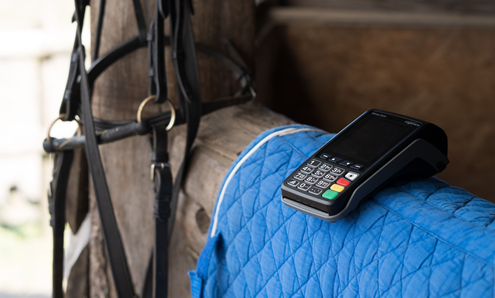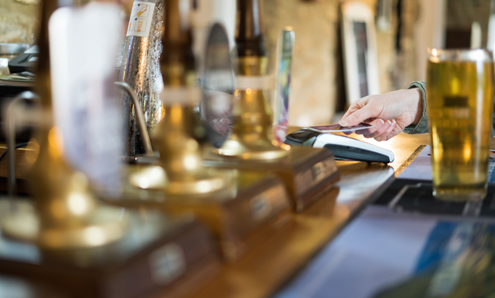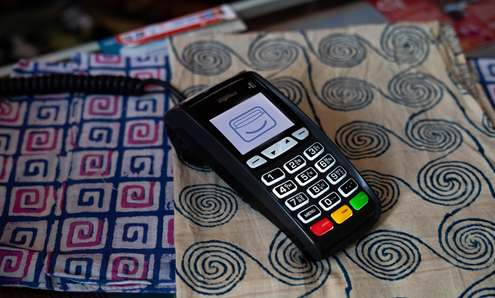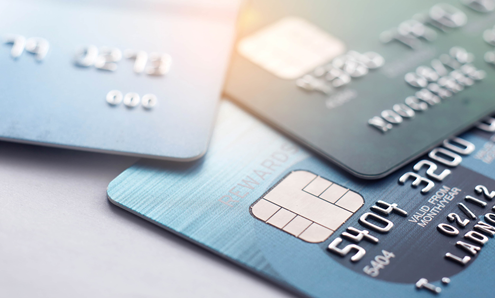Credit and debit cards, and by association card machines, are so pervasive it’s hard to imagine life without them. But in the scheme of things, they haven’t been around for long.
The first iterations were punched card readers, used during the early years of the computer industry to store information on computer systems. It wasn’t until 1978 that the First National Bank of Seattle issued the first debit card to business executives. Just 20 years later, debit cards had overtaken cheque usage all over the world.
So, we’ve taken a look at the history of card readers, their developments over time and what the future holds for this revolutionary technology.
The first machines weren’t machines at all
The first card ‘machines’ are so old-school most of us have never seen one.
Manual imprinters have been around since the start of the credit card movement. Here’s how they work:
- The credit card goes face-up into the manual imprinter
- A sales slip is placed directly on top
- The credit card information is imprinted onto the sales slip
- The sales slip is given to the customer to sign
- The sales slip is mailed to the bank
Today, electronic credit card processing has rendered manual imprinters more or less obsolete. But they’re still around – and some businesses keep them on hand in case of network interruption.
The first payment card, Diners Club, appeared in the United States in 1950. It was shortly followed by American Express in 1958, giving merchants and customers the option to settle transactions without using cash. They didn’t arrive in the UK until 1963.
1979 – a turning point in credit card processing history
The next step in the evolution of card machines was phone authorisation. Merchants could call the bank, read the credit card number and wait for confirmation. Even so, it was a convoluted process and typically reserved for larger transactions – unlike phone payments today.
1979 was a turning point: the advent of the point of sale (POS) system. Visa was first on the scene with its hefty debut payment terminal. In the same year, magnetic stripes were added to credit cards, allowing information to be captured electronically.
It was French inventor Roland Moreno who first patented the chip card, capable of offering much greater payment security than the magnetic stripe. By 1985 this radical technology became widely used on bank cards, although it didn’t make it to the UK until 2004.
Harder, better, faster, stronger
Things only got better from there. The first electronic card machines were tethered to a landline connection, meaning they were fixed in one place. Today’s terminals allow you to connect to the internet via 4G, 5G, GPRS, WiFi or Ethernet – and so the portable card machine was born.
Even better, mobile card machines now give merchants the freedom to accept payments by credit or debit card anywhere – ideal for markets and trade shows.
Contactless payment systems crashed onto the scene in the early noughties, designed to read credit and debit cards within a 10cm range using near field communication (NFC) technology. Barclaycard was the first in the UK to adopt NFC in 2007.
Thanks to rapid consumer adoption, modern card machines all have contactless functionality and Visa and Mastercard will require all card machines to accept contactless payments by 2020.
What does the future hold?
Looking forward, there are many exciting developments afoot. We’re now entering a period where payment processing is changing dramatically, from mobile swiping accessories that attach to phones and tablets, to consumers using their smartphones as payment devices.
Financial corporations are looking beyond PIN and signature authentication systems to biometric data, i.e. payment machines capable of recognising fingerprints. Both Mastercard and Ingenico are well on the way to developing viable biometric systems.
The plastic card is still dominant here in the UK, overtaking cash payments for the first time in 2018, but mobile and contactless payments continue to rise – it won’t be long before these new technologies seem commonplace.
Where does that leave you?
Payment options have come a long way and continue to develop faster than ever as consumers’ needs and demands change. With online payments, touchscreen tablets and wireless terminals, today’s merchants are faced with more choice than ever.
If you’re not sure which one’s right for you, get in touch with our payment experts on 0808 274 2017 to see how we can bring you up-to-date.



